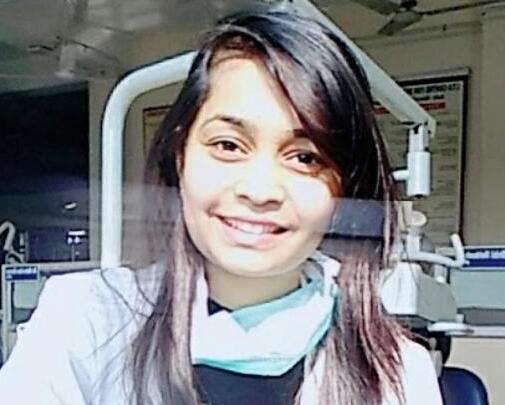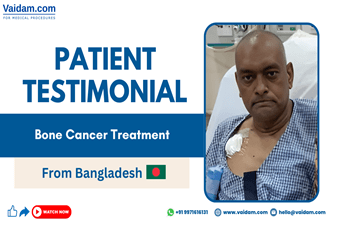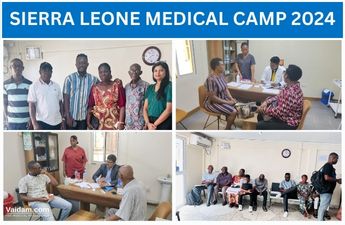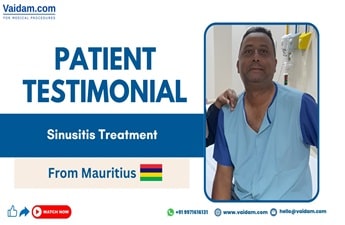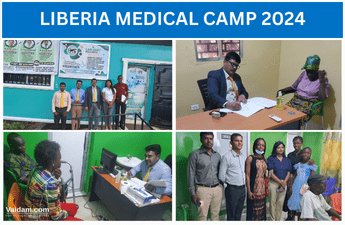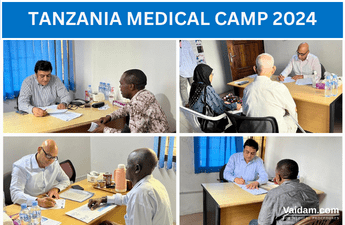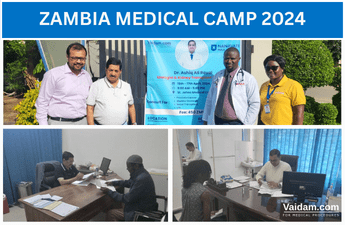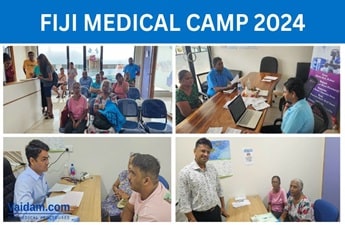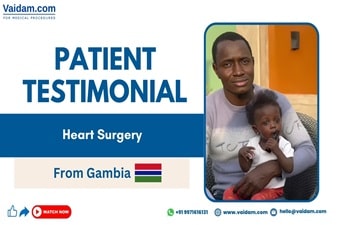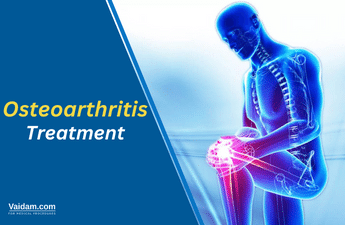
The term arthritis describes nearly 100 conditions that affect joints along with the connective tissues and some other tissues around the joints. The word arthritis means joint inflammation.
The symptoms of arthritis develop over time. However, in some cases, they may also appear suddenly.
The condition is most commonly seen after the age of 64. Sometimes it may also develop in children, teens, or younger adults. Arthritis is more common in women than men. Also, people who are overweight are more prone to arthritis.
According to the WHO, over 18 million people were suffering worldwide from rheumatoid arthritis in 2019. Out of these, approximately 70% were women.
Treating rheumatoid arthritis (RA) is extremely important to preserve joints and surrounding tissues. If not treated, RA can cause damage to the heart, lungs, and nervous tissue.
This blog will guide you through rheumatoid arthritis, its symptoms, causes, and treatment options.
Get in Touch with Medical Experts
What are the Types of Arthritis?
Arthritis is majorly divided into seven basic categories that include:
- Inflammatory arthritis (commonly known as Rheumatoid Arthritis)
- Degenerative or Mechanical Arthritis (commonly known as Osteoarthritis)
- Gout
- Fibromyalgia
- Childhood Arthritis (Juvenile Idiopathic Arthritis)
- Psoriatic Arthritis
- Lupus
Rheumatoid arthritis is the most common form of arthritis.
What is Rheumatoid Arthritis (RA)?
This autoimmune disorder occurs when the body's immune system starts affecting its own body. Rheumatoid arthritis may also affect parts other than the joints, such as skin, eyes, lungs, heart, and blood vessels. The joints that are most commonly affected are the hands, feet, wrists, elbows, knees, and ankles.
Rheumatoid arthritis usually attacks multiple joints at once. When a joint is affected by RA, the lining of the joint becomes inflamed. The damage to the tissue causes chronic pain, deformity, and lack of balance.
What are the Symptoms of Rheumatoid Arthritis?
The symptoms and effects of rheumatoid arthritis may come and go. A period of high disease activity (increase in inflammation and other symptoms) is called a flare. A flare-up can last for several days or months.
The initial signs of RA may include only pain and tenderness. There may not be any redness or swelling in the joints. In later stages, the following symptoms may get associated:
- Joint pain, swelling, tenderness, or stiffness for six weeks or longer
- Morning stiffness for 30 minutes or longer
- Associated fatigue, loss of appetite, and low-grade fever.
- Multiple joints are affected
- Small joints like wrists and certain joints of the hands and feet are affected
- The same joints on either side of the body are affected
Other than joints, the following body parts may also be affected by RA:
- Eyes: Dryness, redness, sensitivity to light, pain, and impaired vision.
- Skin: Small lumps under the skin over bony areas called rheumatoid nodules are formed.
- Blood: Anemia is a condition marked by fewer red blood cells than normal.
- Blood Vessels get inflamed, which can cause damage to the nerves, skin, and other organs.
- Mouth: Dryness and gum irritation or infection.
- Lungs: Inflammation and scarring of lungs leading to shortness of breath.
What are the Stages of Rheumatoid Arthritis?

Rheumatoid arthritis is differentiated into four stages, namely stage 1 - synovitis, stage 2 - pannus, stage 3 - fibrous ankylosis, and stage 4 - bony ankylosis.
- Stage 1: Synovitis or stage 1 arthritis is marked by mild symptoms like joint pain and stiffness. The most commonly affected joints are the hands, feet, ankles, and wrists. In stage 1 RA, the immune system begins to attack the joint tissue, causing inflammation of the synovial membrane.
- Stage 2: It is a moderate stage RA, in which the continued inflammation of the synovial membrane causes thinning of the cartilage. Symptoms like joint pain and stiffness worsen in stage 2.
- Stage 3: RA is considered severe once it reaches stage 3. It is marked by the condition of fibrous ankylosis, in which the damaged joint starts fusing with the fibrous connective tissue. The range of motion of joints is severely damaged, making simple tasks difficult.
- Stage 4: End-stage RA or bony ankylosis is a condition in which two bones fuse together. There is a severe loss of mobility and muscle strength. Functions of joints like knee bending or hip flexing are also lost.
What are the Main Causes of Rheumatoid Arthritis?
Rheumatoid arthritis (RA), an autoimmune disease, is caused when the body's immune system cannot differentiate between its own cells and foreign cells. The healthy tissues in the joints are attacked by the immune system.
The exact reason for triggering the immune response still needs to be established. However, scientists think it is caused by a combination of various factors like genetics, environment, and hormones. The immune response may be triggered by infection with certain viruses and bacteria, smoking, and physical/emotional stress.
How Rheumatoid Arthritis Damages the Joints?
When the immune system starts attacking the body's own joints, it creates inflammation in the tissue that lines the inside of joints. This leads to thickness, swelling, and pain around the joints.
If this inflammation is not stopped, it can damage the cartilage, the elastic tissue that covers the ends of the bone in a joint, and the bone itself. With time, cartilage is lost, and spacing between the bones starts getting reduced. The joints become loose, unstable, and painful. They also lose their mobility.
The joint damage cannot be reversed. Hence it is crucial to diagnose and control RA at an early stage.
How is Rheumatoid Arthritis Diagnosed?
Diagnosis of rheumatoid arthritis consists of blood tests and imaging tests. Blood tests such as elevated erythrocyte sedimentation rate (ESR) or C-reactive protein may indicate the presence of inflammation in the body. Other than this, blood tests detecting the presence of rheumatoid factor and anti-CCP (cyclic citrullinated peptide) antibodies can also be done.
The imaging tests include an X-ray, ultrasound, or MRI scan to look out for any joint damage, such as erosions, loss of bone within the joint, and narrowing of joint space. If the radiology tests do not show any damage, it may mean that the disease is at the initial stages and has not damaged the joints.
How is Rheumatoid Arthritis Treated?
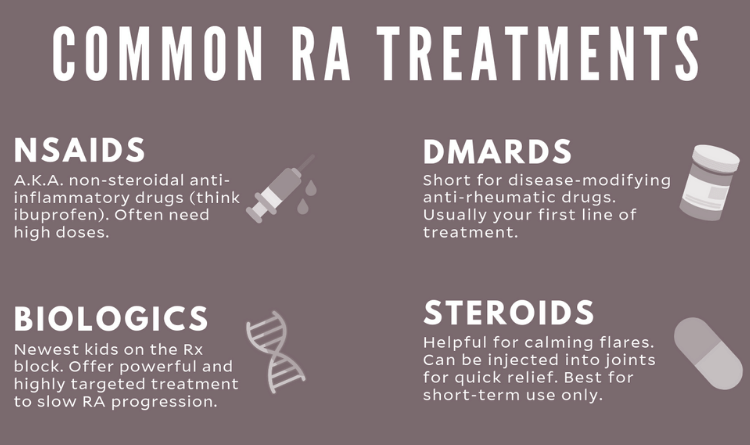
Ideally, the rheumatoid arthritis treatment aims at:
- Stop inflammation
- Relieve the symptoms
- Prevent joint and organ damage
- Improve physical function and overall well-being
- Reduce long-term complications.
Although RA cannot be completely cured, the following treatment methods help slow the disease progression and prevent joint damage.
Medications
- NSAIDs (Non-Steroidal Anti-Inflammatory Drugs): These are prescribed to help ease arthritis pain and inflammation. NSAIDs can be taken by mouth or applied on the skin of the swollen joint. They are available over-the-counter or can be prescribed by the doctor.
- Corticosteroids: They are used to control the progressing inflammation, while the other medications take longer to start the effect. However, corticosteroids are not used for a longer time or in high doses due to their side effects which include thinning of bones, weight gain, and diabetes.
- Disease-Modifying Anti-Rheumatic Drugs (DMARDs): These drugs help slow down the disease's progression and reduce the damage to the joints and other body parts that are affected.
- Biologics: These are also known as biology response modifiers that target parts of the immune system that trigger inflammation and cause joint and tissue damage. Biologics increase the risk of infection in the patient.
Surgery
Surgery is the ultimate option in cases where medications do not work well.
The following types of surgeries can be done, depending on the cases:
- Synovectomy is a surgery to remove the inflamed synovium (lining of the joint). Synovectomy can be performed on elbows, knees, wrists, fingers, and hips.
- Tendon Repair: Inflammation and joint damage cause tendons around the joint to loosen or rupture. Hence, surgery may be performed to repair the tendons around your joint.
- Joint Fusion: Surgical fusion of a joint is recommended to stabilize or realign a joint. It also helps in pain relief when a joint replacement isn't an option.
- Total Joint Replacement: During joint replacement surgery, the complete joint or damaged parts of the joint are removed and replaced with artificial ones (prostheses) made of metal or plastic.
Physical Therapy
This form of therapy is mostly done after treating the condition with medications or surgery. Physical therapy done under a trained professional helps keep the joints flexible and active.
Key Takeaway
Rheumatoid arthritis is a chronic condition that causes swelling, pain, and joint stiffness. Treating RA in the early stages is necessary to save the joints. However, since the disease does not show any significant signs and symptoms in the early stage, its diagnosis gets difficult. Rheumatoid arthritis is treated by medical specialists called rheumatologists. The primary treatment plan for RA includes medicines to relieve symptoms, supportive treatments like physiotherapy and occupational therapy to restore joint mobility, and surgery to correct joint deformities.
Some Frequently Asked Questions
Ques. Is Rheumatoid Arthritis Curable?
Ans. To date, there is no cure available for rheumatoid arthritis. However, a rheumatologist can help you preserve the joints and limit the impact of the disease by using medicines, lifestyle modifications, surgery, and supportive care.
Ques. What are the First Signs of Rheumatoid Arthritis?
Ans. The first signs of rheumatoid arthritis include tenderness and pain in the body, an increase in fatigue, weakness in certain body areas, and a general feeling of being unwell.
Ques. At What Age Can Rheumatoid Arthritis Start?
Ans. People of any age can be affected by rheumatoid arthritis. However, the usual age for developing RA is 30 to 60 years. Children and young adults aged 16 to 40 develop Young-Onset Rheumatoid Arthritis (YORA).
Ques. What Deficiency Causes Rheumatoid Arthritis?
Ans. Rheumatoid arthritis has been linked with vitamin D deficiency. Reduced vitamin D intake increases the susceptibility to developing RA. Vit. D deficiency is also associated with other autoimmune diseases like diabetes mellitus 1 and multiple sclerosis.


